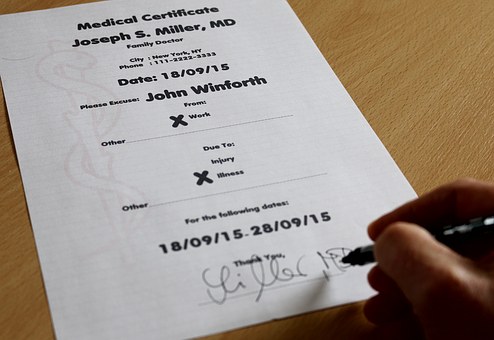Change in Control at the Office? Here's 10 Ways to Keep Your Job

Change in Control at the Office? Here's 10 Ways to Keep Your Job
ACTUAL "CASE HISTORY": Stephanie was the HR Director of the Reinsurance Division of a large, international insurance firm. Because of the recent downturn in the economy, business throughout the industry was slow. For this reason, the CEO decided to pursue the increasingly common "consolidation" business strategy. In fact, he decided to attempt to purchase the company's largest competitor, in this way eliminating competition and gaining overall market share. At the same time, the CEO calculated that overhead could be reduced, as there would be no need for two Security Directors, two Marketing Directors, two Chief Information Officers, etc.
Stephanie understood that there would also be no need for two HR Directors, either, and for this reason became quite anxious. She called for a consultation.
With our guidance, Stephanie put together what we call a "Job Continuity Plan," that is, a plan to improve the probability her employment would continue regardless of any reduction in workforce. She devoted time, care and attention to "thinking out" her job continuity plan, and promptly proceeded to execute on it.

Stephanie's job continuity plan was based primarily on what she perceived to be her CEO's first concern: keeping control of "who goes - who stays" after the merger. She knew he had concerns that valuable people might defect, that long-term friends needed to be protected, that promises he made to bring about the merger had to be kept, favors to repay, and "scores" to keep. On her own initiative, she began the process of cataloguing and proposing ways to address each of those concerns. She made sure the CEO knew she was "in his corner," on his side, and a critical team member.
About four months later, when the merger did, in fact, take place, Stephanie was asked to meet privately with the CEO, and was given her "news": she was asked to take over the HR duties of the merged company. She was more than relieved. On the other hand, her counterpart at the acquired firm - who had expected to get the merged job - was crestfallen. Did Stephanie's job continuity plan make the difference? We'll never know. One thing we do know for sure: it definitely did not hurt.
LESSON TO LEARN: There are many kinds of "change of control" that might take place at work, including these seven most common types:
1. Company is bought, sold, or merged with another company;
2. Division or department is shut down or sold to another company;
3. New CEO is brought into your company, and likely to bring in his own team;
4. New Manager or Boss is put in charge of your Division or Group;
5. Reorganization results in you reporting to a new manager or boss
6. Transferred to new Boss's Group; or
7. Boss leaves; New Boss Hired.
Changes in control at work are inherently risky in terms of job security. No matter what type of "change of control" you might face, the arrival of a new "captain of the ship" is bound to result in him or her assembling a new "crew," and certain of your colleagues - perhaps including you - being "thrown overboard."
However, "forewarned is forearmed." In every "change of control," there are "Decision-Makers" who will make decisions regarding your future. In any "change in control" there are certain steps you can take - and should take - to try to affect those decisions, to lower your chances of job loss, and increase your chances of keeping your job.
WHAT YOU CAN DO: Here are ten things you can do to lower your chance of job loss in a "change in control" at the office. Each is one step in the right direction:
1. First, Accept that Hard Work and Dedication, Alone, May Not Protect Your Job: Though hard work and dedication to your job should ideally be the one and only source of job security, we do not live in an ideal world. Instead, we live in a "human" world, and humans are imperfect, political animals. When seeing a change in control coming, many of our clients devote themselves more than ever to working as hard as they can, because they have been told, and they believe, that hard work is the key to job security. It surely is a part, but it is not the only key, and hunkering down to work 20 hours a day will not, alone, do the trick. In fact, "burying" yourself in your work may keep you from pursuing the other tasks that would more likely be in your job-continuity interests.
I would never suggest that employees, fearing job loss due to change of control, should slack off from their hard work. But I would suggest that, in addition to working hard, preparing and executing a job continuity plan to keep your job can't hurt, but could only help. First, though, you must accept that hard work, alone, will likely not do the trick.
2. Then, Put Together a "Job Continuity Plan": In trying to accomplish anything worthwhile, you're so much more likely to be successful if you first put together a simple plan. You don't need formality; you only need direction. Simply put, a plan is a list of those steps you have reason to believe are steps toward the achievement of your goal. In this context, your "goal" is to keep your job. There are people in your organization who will be making decisions that will determine whether you keep your job. The necessary "steps" in your plan to keep your job should be steps that will more likely than not encourage or motivate those "decision-makers" to make job-continuity "decisions" in your favor. So your plan starts out with thinking about (1) who are the likely decision-makers, and (2) what might "sway" them to make the "right decision" for you?
3. Consider: Who Might Be Your "Decision-Makers": Whenever there is a change in control at work, the new managers will take charge, and start making changes. Decisions will be made as to "Who stays, Who goes?" Sometimes it's easy to figure out who will be making those "Who stays, Who goes" decisions, sometimes it is not. Whether easy or difficult, as part of your own "job continuity plan" you need to give thought to who might later be in charge, and focus your plan on affecting that person's or those persons' decisions. It's not a matter of "currying favor" with these people as much as it is a matter of "creating favorable decisions" regarding your employment. This is not a "friendship contest" so much as it is a "contest for continuity."
4. Always Start Off with "What can I do FOR YOU?": In any form of negotiating, the temptation is to ask for help, or to tell people what you want, need or deserve. That temptation is actually counter-productive. There's a natural tendency to say, think or feel, "Everyone wants something." Instead, other people would rather hear what you can do FOR THEM. That should be the starting point of each and every negotiation, for it immediately makes the person you are communicating with very, very receptive to your message. What you would like in return is always raised later, secondarily, in lower priority, even though to you it is paramount. Though it may seem counter-intuitive, when others are first convinced you can do something for them, they are then far more inclined to do something for you. The message is this: they and their concerns must be discussed first.
5. Remember that Reputation is the First Interest in Business: For every business, and every business-person, reputation is the number one interest. It's an undeniable fact that, if you have a good reputation, you're more likely to be successful; and the better the reputation, the more successful. Ask yourself: do you in some way contribute to the company's - or the decision-maker's - reputation in the marketplace, in the company, or even in the office? Are you, your skills, your presence, your relationships or any other aspect of your working life, helpful to maintaining those reputations? Would your leaving for a competitor harm those reputations?
If so, in soft and subtle ways, you might remind your decision-maker that you are attending to that concern, and ask him or her if there are other ways you might do so. Never boast, and never threaten, but simply and softly remind. If you hear of any negative "publicity" or private comment about your decision-maker, it might be wise to let him or her know, and to know, too, that you are concerned and "there" for them in that way. The higher up in the company hierarchy your decision-maker is, the more he or she will understand and appreciate your concern, attention and efforts to their reputation.
6. We All Protect Our Friends, and Decision-Makers Do, Too: It should come as no secret that people tend to help out others they view to be their friends. While it may be futile to try to start a new friendship in a hurry, you should give thought to who your "friends" are, and to who the decision-makers' "friends" are, as well. To the extent there is an overlap, you may want to speak with your "friends" and seek their "thoughts" about the anticipated change of control. Chances are they, too, are having the same concerns you are, and will welcome the chance to see how the two of you can help each other.
7. Invigorate Your Relations with Important Clients and Customers: While reputation is the most important business interest, the next most important business interest is relations, for it is through our business relations that we carry out our business. While all kinds of business relations are valuable, relations with important clients and customers - those who provide our revenue, the very lifeblood of business - are tops. Devote time and effort to invigorating your own relations with important clients and customers, with an eye toward making them view you as someone they depend on to get the time and attention they surely deserve. There's no more effective spokesperson for you than important clients and customers.
8. "Salute the Flag": Once it becomes clearer who the decision-makers are likely to be, it can't hurt to make sure he, she or they know you are "on their side," "in their corner," and "there for them." Sending a message such as "In your new role, please know you can count on my enthusiastic support" can only help your perception of loyalty - a key component of business value - in their minds.

9. Communication is 50% of any "Job Continuity Plan": Whatever steps you take to execute your own job continuity plan and, thus, keep your job, it's important to bear in mind that what counts, above all, is the perception of your value in the mind of the decision-maker(s). In preparing and executing a job continuity plan, it is your number one task to (i) create, (ii) improve, (iii) enhance and, most of all, (iv) convey the perception of your value to the decision-maker(s). That means communication, however it is accomplished. It doesn't matter if you communicate by email, by personal meeting, through a "friend" or in any other way, it just matters that you communicate effectively.
Many people shy away from this part of executing a job continuity plan, for several reasons, among them discomfort with communicating, a reluctance to "toot one's own horn," and the fear of making an error of some kind. If you are one who is afraid to "push the send button," you might try asking a friend or loved one to first give you feedback on how they would view your intended communication, as a sounding board. No matter how you get over this reluctance to communicate to effect change, you simply must "get over it."
10. As Parachutists say, "It Never Hurts to Have a Plan B": Finally, no plan is harmed by having a backup plan. You may be wise to have a backup plan, just in case your "Plan A" is not successful. Do you have an updated resume prepared? Have you reviewed your company's severance plan to determine your level of severance benefits? Do you have an employment attorney "on call?" Are there recruiters you may want to "have lunch" with in the meantime? How about purchasing a new interview suit? Have you purchased a copy of "Fired, Downsized, or Laid Off?" In fact, having a backup plan prepared may just give you that extra ounce of self-confidence to make you that much more attractive a candidate in the first place.
When Changes in Control take place at your workplace, it's time to act on your own behalf, and sooner rather than later. While preparing and executing a Job Continuity Checklist will not guarantee you will keep your job, it is the very best thing you can do to keep it. If you never try, you'll never know, and we don't want you to "know" you "should have" done so too late to help yourself. The Importance of an Illness & Injury Prevention Plan (IIPP) Perfect Couples Season 1 Episode 8: Perfect Job Employee Turnover: Seven Reasons Why People Quit Their Jobs 8 qualities one should have in any job Important Advice to find that next great job Get Suitable Expat Job How to Choose the Correct Screw for the Job Getting that Driving Job How to Get a Good Driving Job Job Growth Jojoba Oil – Solves Oily Skin How to Land On your Dream Job Job Hunting for the Mature Worker